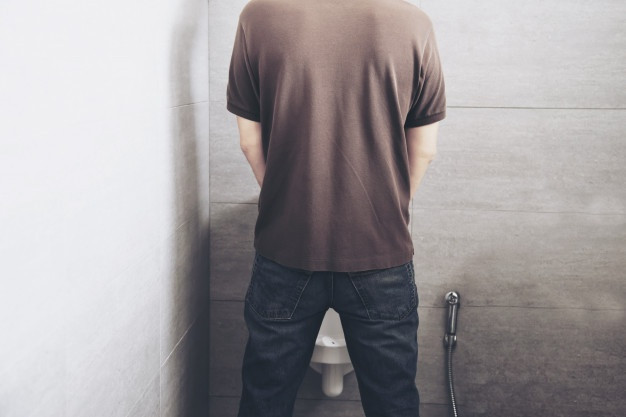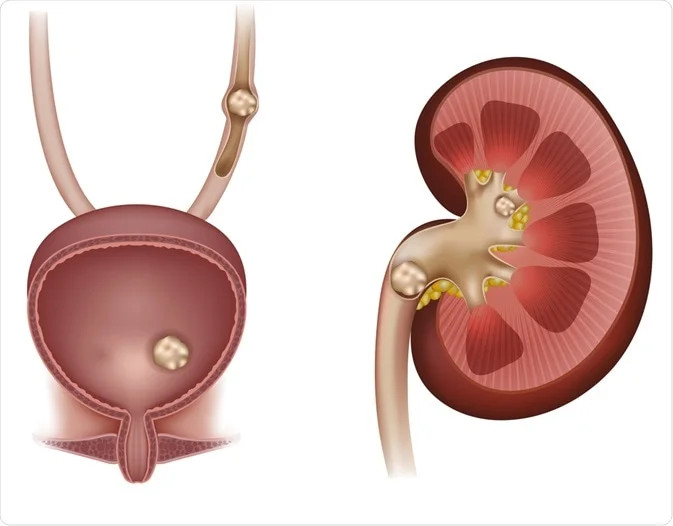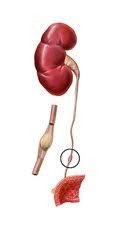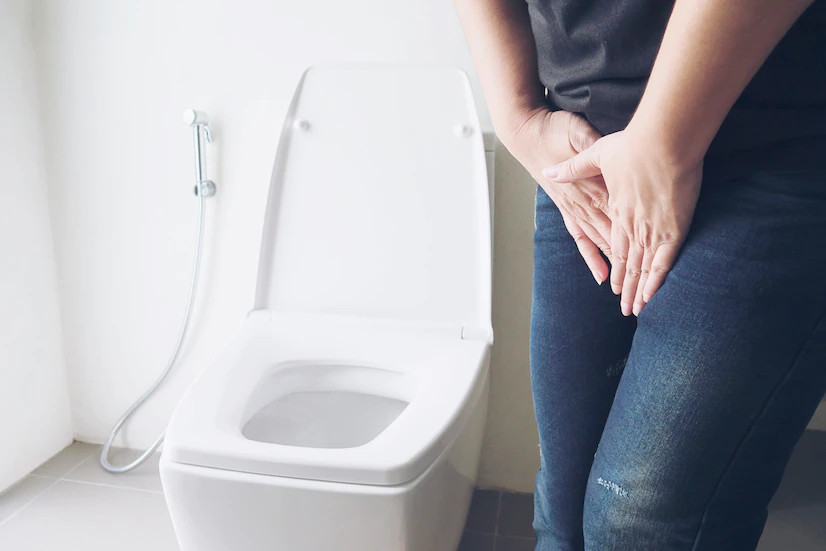Definisi
Uretritis merupakan peradangan yang terjadi pada saluran uretra. Saluran uretra berfungsi sebagai saluran akhir yang membuang urin dari kandung kemih ke luar tubuh. Uretritis banyak disebabkan oleh infeksi. Uretritis akibat infeksi dibagi menjadi dua yaitu uretritis gonore dan uretritis non gonore. Uretritis gonore terjadi karena infeksi bakteri gonore dan termasuk ke dalam penyakit menular seksual. Uretritis gonore dapat dialami oleh laki-laki dan perempuan. Kasus lebih banyak ditemukan pada laki-laki karena uretra laki-laki merupakan saluran yang sama untuk berkemih dan mengeluarkan sperma.
Penyebab
Penyebab uretritis gonore adalah infeksi dari bakteri Neisseria gonorrhoeae. Bakteri ini menyebar melalui kontak dengan organ yang terinfeksi terutama hubungan intim. Hubungan intim yang dimaksud termasuk hubungan melalui penis, vagina, dubur (anal), atau mulut (oral). Penularan juga dapat terjadi melalui persalinan normal dari ibu hamil yang terinfeksi gonore kepada bayi yang baru lahir. Gejala yang akan dialami bayi muncul pada mata dan disebut konjungtivitis gonore. Penularan tidak dapat terjadi melalui benda yang sebelumnya dipakai orang lain, seperti pakaian atau dudukan toilet. Hal ini dikarenakan bakteri tidak dapat hidup lama di luar tubuh.
Faktor Risiko
Faktor risiko utama dari uretritis gonore adalah hubungan intim. Penyakit ini banyak terjadi pada perempuan dan laki-laki usia muda yang aktif secara seksual. Risiko mengalami uretritis gonore akan meningkat apabila ada beberapa kondisi berikut :
- Berhubungan seksual dengan pasangan baru yang tidak diketahui status kesehatannya,
- Memiliki pasangan seksual yang juga memiliki pasangan lain,
- Memiliki lebih dari 1 pasangan seksual,
- Pernah mengalami infeksi menular seksual sebelumnya,
- Pernah mengalami penyakit gonore sebelumnya,
- Status pendidikan, sosial, ekonomi yang rendah
Gejala
Gejala dari uretritis gonore cukup khas dan muncul lebih banyak di area genital. Beberapa kasus bisa terjadi tanpa gejala terutama pada perempuan. Gejala dapat muncul kurang lebih 1 minggu setelah terjadi infeksi. Perempuan dan laki-laki memiliki gejala yang sedikit berbeda.
Laki-Laki
Gejala pada laki-laki berupa :
- Nyeri saat berkemih atau buang air kecil.
- Keluar cairan berisi nanah dari ujung uretra atau ujung penis. Cairan dapat berwarna putih, kuning, atau hijau.
- Nyeri dan pembengkakan pada salah satu testis.
Perempuan
Sementara, gejala yang muncul pada perempuan adalah :
- Nyeri saat berkemih,
- Peningkatan cairan vagina yang abnormal,
- Perdarahan vagina di antara waktu mens atau setelah berhubungan seksual,
- Nyeri perut dan pelvis,
- Nyeri saat berhubungan seksual,
- Demam (hanya pada beberapa kasus).
Selain pada saluran uretra, gonore juga dapat menyerang organ lain. Gejala yang ditimbulkan berbeda-beda dan berhubungan dengan organ tersebut, seperti :
- Rektum dan/atau anus. Gejala yang muncul berupa rasa gatal atau nyeri, keluar cairan bernanah, hingga bercak merah darah saat buang air besar.
- Muncul rasa nyeri pada mata, sensitivitas pada cahaya, keluarnya cairan nanah dari salah satu atau kedua mata.
- Gejala yang dirasakan dapat berupa nyeri tenggorokan hingga bengkak kelenjar limfe di leher.
- Sendi yang terinfeksi akan terasa hangat, merah, bengkak, terasa nyeri terutama saat bergerak. Sendi yang biasa terinfeksi adalah sendi lutut.
Diagnosis
Penegakan diagnosis uretritis gonore dilakukan dengan penilaian gejala dan pemeriksaan yang dilakukan dokter. Gejala yang dialami akan digali lebih dalam oleh dokter, terutama faktor risiko yang dimiliki. Dokter juga akan melakukan pemeriksaan fisik untuk melihat cairan yang keluar dari uretra dan memastikan nyeri yang dirasakan. Selanjutnya akan dilakukan pemeriksaan laboratorium untuk mengkonfirmasi penyebab penyakit dengan cara :
- Tes urin atau urinalisis. Pemeriksaan ini bertujuan untuk melihat bakteri yang ada pada urin. Bakteri yang ada di uretra dapat keluar bersama urin.
- Pemeriksaan swab di area yang terinfeksi. Area yang akan diambil sampel adalah ujung uretra, vagina, tenggorokan, atau anus. Untuk mengidentifikasi bakteri yang menginfeksi dilakukan dengan pewarnaan gram dan kultur bakteri. Pada kasus uretritis gonore akan ditemukan bakteri N. gonorrhoeae.
- Pemeriksaan darah. Dokter dapat meminta pemeriksaan tambahan untuk infeksi menular seksual yang lain bila faktor risiko yang dimiliki tinggi. Seperti pemeriksaan HIV dan sifilis.
Tata Laksana
Uretritis gonore dapat ditangani dan diobati dengan pemberian antibiotik. Antibiotik yang diberikan saat ini terdiri dari 2 jenis karena bakteri N. gonorrhea sudah cukup kebal terhadap antibiotik yang sering digunakan sebelumnya. Penyakit ini juga dapat disertai infeksi menular seksual lain seperti Chlamydia. Antibiotik diberikan dalam bentuk suntikan (ceftriaxone) dan obat tablet (azithromycin atau doksisiklin). Dosis dan durasi minum obat akan disesuaikan oleh dokter yang melakukan pemeriksaan. Dokter juga akan memberikan obat pereda nyeri seperti Parasetamol untuk mengurangi gejala.
Pengobatan juga akan diberikan kepada pasangan sehingga risiko untuk menginfeksi kembali akan menurun. Gejala akan berkurang setelah pengobatan dimulai. Meski begitu, antibiotik tetap harus dihabiskan walaupun gejala sudah hilang. Selama masa pengobatan, Anda dan pasangan dianjurkan untuk tidak berhubungan seksual dahulu.
Komplikasi
Uretritis gonore memiliki risiko komplikasi yang cukup berat bila tidak ditangani dengan baik. Komplikasi yang terjadi pada laki-laki dan perempuan berbeda karena organ yang dapat terinfeksi berbeda. Namun, secara umum komplikasi yang dapat terjadi pada siapa saja adalah :
- Peradangan sendi terjadi karena infeksi gonore dapat menyebar ke bagian tubuh lain.
- Peningkatan risiko penyakit HIV/AIDS.
Laki-Laki
Komplikasi yang dapat terjadi pada laki-laki berupa :
- Infeksi yang terjadi pada saluran epididimis pada laki-laki. Saluran ini merupakan saluran untuk sperma keluar dari tubuh. Kondisi ini dapat menimbulkan kemandulan pada laki-laki.
- Penyempitan saluran uretra.
- Pembengkakan di sekitar penis.
- Prostatitis atau peradangan kelenjar prostat.
Perempuan
Sementara, komplikasi yang dapat terjadi pada perempuan berupa :
- Penyakit Pelvic Inflammatory Disease (PID). Penyakit ini terjadi ketika infeksi naik ke rahim dan tuba falopii. Kondisi ini dapat menimbulkan kemandulan.
- Kehamilan ektopik. Kondisi kehamilan ini terjadi bukan di rahim dan akan membahayakan nyawa Ibu dan anak.
- Komplikasi pada bayi terutama dari ibu hamil dengan gonore. Bayi dapat mengalami kebutaan, peradangan, dan infeksi di kepala ketika lahir.
Pencegahan
Uretritis gonore dapat dicegah dengan cara tidak berhubungan seksual. Risiko juga akan menurun dengan memiliki satu pasangan seksual saja. Bila tidak memungkinkan, ada beberapa cara untuk menghindari penyakit ini seperti :
- Penggunaan kondom saat berhubungan seksual.
- Menghindari hubungan intim dengan lebih dari satu pasangan.
- Pastikan anda dan pasangan rutin melakukan pemeriksaan infeksi menular seksual.
- Tidak berhubungan seksual dengan orang yang sedang mengalami penyakit menular seksual.
- Lakukan pemeriksaan gonore rutin apabila memiliki faktor risiko.
Kapan Harus ke Dokter?
Konsultasikan ke dokter, dokter spesialis kulit dan kelamin (Sp.KK) atau dokter spesialis dermato-venerologi (Sp.DV) bila ada salah satu gejala di atas yang Anda alami. Bila pasangan Anda mengalami gejala tersebut, Anda sebaiknya ikut berobat. Gejala baru akan muncul 1 minggu setelah infeksi. Penanganan yang tepat akan mengurangi risiko penyakit ini berulang kembali. Segeralah ke dokter apabila gejala dirasakan memberat atau tidak membaik meskipun sudah melakukan pengobatan.
Mau tahu informasi seputar penyakit lainnya? Cek di sini, ya!
- dr Anita Larasati Priyono
Gonorrhea - Symptoms and causes. Mayo Clinic. (2022). Retrieved 19 June 2022, from https://www.mayoclinic.org/diseases-conditions/gonorrhea/symptoms-causes/syc-20351774.
Qureshi, S. (2022). Gonorrhea: Practice Essentials, Background, Pathophysiology. Emedicine.medscape.com. Retrieved 19 June 2022, from https://emedicine.medscape.com/article/218059-overview.
Treated Uretritis Due to Gonorrhea (Male). Fairview.org. (2022). Retrieved 19 June 2022, from https://www.fairview.org/patient-education/116665EN.
Gonorrhea. WebMD. (2022). Retrieved 19 June 2022, from https://www.webmd.com/sexual-conditions/gonorrhea#1.
Gonorrhea. WebMD. (2022). Retrieved 19 June 2022, from https://www.webmd.com/sexual-conditions/gonorrhea#1.
Gonorrhea: Symptoms, Treatment, Causes, and More. Healthline. (2022). Retrieved 19 June 2022, from https://www.healthline.com/health/gonorrhea.











